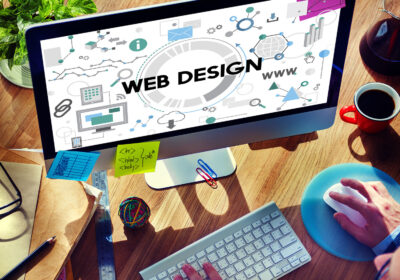Just like every other industry in the IT sector, web design is also subject to evolution, which also explains how it sustains its relevance every year. Last year, we witnessed a number of inspiring web design trends that opened doors to countless possibilities of making the web more immersive than ever. Quite a few of them will be turning heads this year.
Here are a couple of those web design trends you should watch for in 2017.
Virtual Reality/360º Videos
Virtual Reality (VR) is the single most important thing that took over the gadget realm by storm. However, the trend didn’t exactly place its mark on web design. At least not yet. But this year, it could. Peugeot 208’s promo campaign for a new product utilized both virtual reality and 360º videos, and received great applause in the digital realm.
Google’s already invested in VR, evident from Google Daydream headset which keeps expanding the possibilities of adopting the technology for everyday use. One of those possibilities certainly include web designs too that would integrate VR and 360º technology.
Conversational Interfaces
Before getting into detail about how conversational interfaces can change the face of business interaction, we should look into something that could change the way web designers think – AI-powered bots. Chances are they won’t be influencing web design much but can give designers innovative ideas on communication through websites, like automating it for instance.
There are already tools that enable online businesses to connect with their customers via popular messaging apps like WhatsApp, Facebook Messenger etc. Many other tools provide personalized customer support and commerce. Conversational interfaces make interactions more engaging for the customers, showing a different side of the business to consumers, and building trust.
Authentic Photography
Stock photography in websites has apparently become too hackneyed as a potential replacement came into practice last year – authentic photography. While studies have shown that people generally ignore stock photography, and it also reduces trust to a certain extent. This started giving second thoughts for businesses about having stock photography in their websites.
Numerous websites with authentic photography popped up online last year, indicating that finding good high-quality images nowadays is easier than we can imagine, not to mention how they can captivate visitors. Studies say images with real people in them can catch the attention of viewers quickly. This also influences the chances of converting visitors as well. This is more of a visual web design trend that’s rising in popularity owing to the demand for candid, authentic images.
Scalable Vector Graphics (SVGs)
The name itself suggests the advantages of SVGs over more conventional image formats like JPG, GIF, and PNG. SVGs are composed of vectors, unlike pixel-based images, and are hence independent of resolutions. Because of this, SVGs are bound to look good in any screen size on any device, and they can also be animated.
That is still not the best thing about SVGs. SVGs don’t require HTTP requests that actually slows down a website to a degree. SVGs won’t have that problem as there won’t be HTTP requests.
Typography
Typography has always been a welcome trend. But last year we saw an increased focus on making websites visually enticing yet different. Typography can serve that purpose just like animations and SVGs. Brands have started to go for eye-catching titles in their websites. Only a perfect combination of great colors, animations, and striking fonts can give a “wow” effect that brands are looking for.
Microinteractions
They are basically those small instances where the user interacts with something in a website. It could be a ‘like’, a ‘share’ or even filling a form field. The purpose is to provide users with feedback and guidance which in turn improves the UX. They have gained a lot of popularity last year, resulting in businesses trying to figure out creative microinteractions. This year, we will be seeing a lot of unique microinteractions in websites.
Pre-built Websites
The world of web development gives great value to ‘speed’ – how fast the website loads, how fast can the website go online, how fast can they complete designing and developing a website…
This could be the reason why pre-built themes and websites were very much appreciated last year. With pre-built websites, designers will be able to work faster to provide a robust base for building prototypes that function. In addition, there won’t be any coding hassles either. We will be seeing this trend more in 2017 considering how impressed the creative community is.
Conclusion
From everything we witnessed last year, it’s safe to assume that 2017 would be momentous for the web design industry with significant focus on personalization and user experience, hopefully giving rise to an immersive and intuitive online world.



